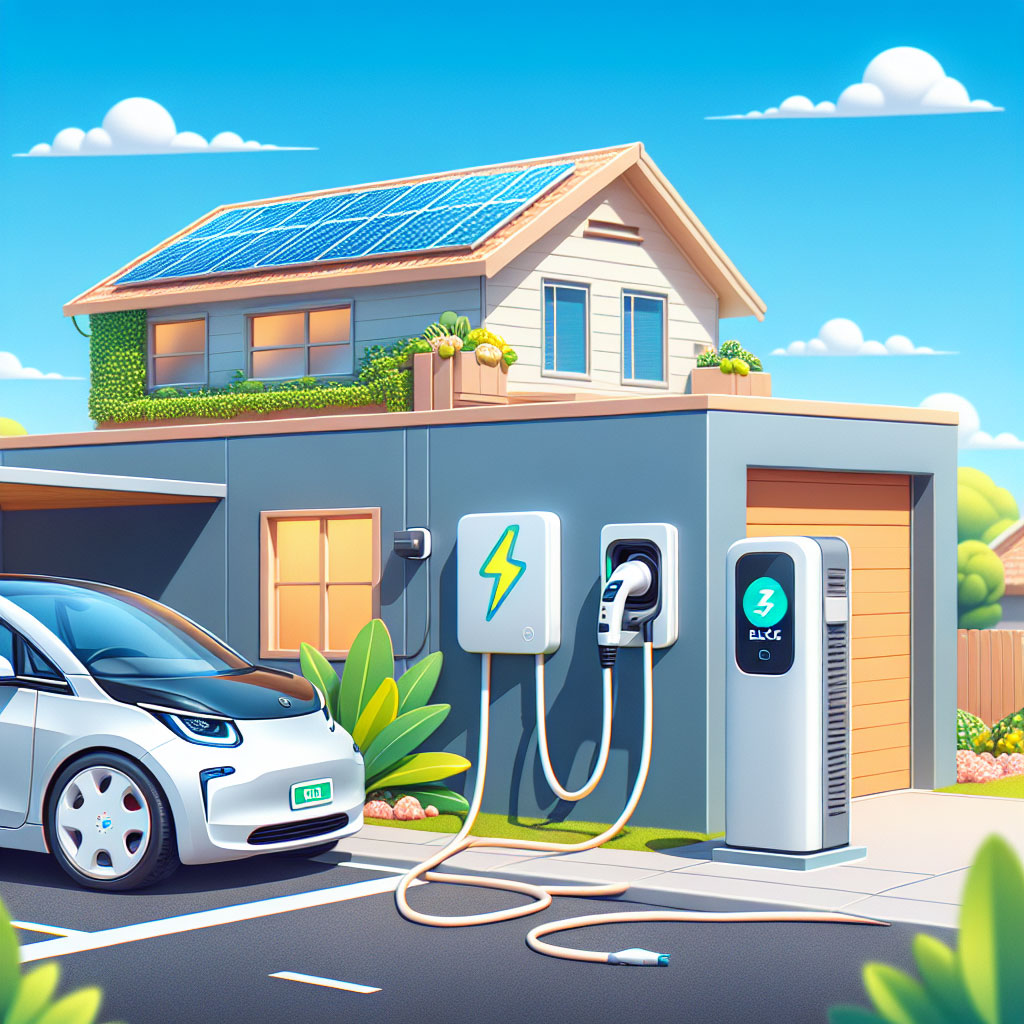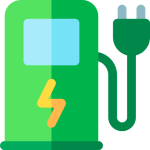
As electric vehicles rapidly become a fixture on Australian roads, the question on every owner’s mind is simple: “Where and how fast can I charge?”
The answer lies in understanding the core differences between AC vs DC charging and the three primary EV charging levels Australia uses. While the technical jargon can sound complicated, grasping these concepts is essential to maximise convenience, save money, and ensure you start every day with a full “tank.”
This foundational guide from EV Evolution will decode the process, helping you find the perfect charging solution for your daily life.
The Core Difference: AC vs DC Charging
Before diving into the levels, you must understand the two types of electrical current involved: Alternating Current (AC) and Direct Current (DC).1
- Alternating Current (AC): This is the power that flows from your home wall socket and across the national grid.2 It periodically changes direction, which is great for long-distance transmission.3
- Direct Current (DC): This is the power that batteries store and use.4 Your EV’s battery is a DC storage unit.5
The fundamental difference between AC and DC charging is where the AC-to-DC conversion takes place:6
| Feature | AC Charging (Levels 1 & 2) | DC Charging (Level 3) |
| Conversion Location | Inside the vehicle (via the On-Board Charger – OBC) | Inside the charging station |
| Speed | Slow to Medium | Rapid/Ultra-Fast |
| Typical Location | Home, Workplaces, Public Parking | Highways, Public Charging Stations |
| Cost | Lower installation and running costs | Higher installation and running costs |
When you use an AC charger, the charger unit itself is relatively simple; the vehicle does the heavy lifting of converting the power.7 When you use a DC charger, the conversion happens in the powerful, oversized charging station, which allows the DC power to be fed directly into the battery, bypassing the car’s slower OBC entirely.8 This bypass is what enables rapid charging speeds.9
🔌 The Three EV Charging Levels in Australia
In Australia, EV charging is categorised into three distinct levels, defined primarily by their power output (in kilowatts, or kW) and the speed at which they replenish your battery.10
1. Understanding the Basics: Level 1 (Trickle) Charging
Level 1 charging is the slowest and most accessible form of charging, often referred to as ‘trickle charging.’11
- Power Source: Standard 240V, 10-amp wall socket (General Purpose Outlet or GPO).12
- Power Output: Up to 2.4 kW.13
- Range Added per Hour: Approximately 10–15 km.
- Best For:
- Emergency: When no other charging option is available.14
- Plug-in Hybrid Electric Vehicles (PHEVs): Which have smaller batteries.
- Minimal Drivers: Those who only drive very short daily distances.15
The Reality for Australian EV Owners: While convenient, relying solely on Level 1 charging is often impractical for Battery Electric Vehicles (BEVs) with larger batteries.16 It can take over 24 hours to fully charge an empty battery, making it a viable option only as a backup or for apartment dwellers with limited options.
2. The Sweet Spot: Level 2 (AC) Charging
Level 2 charging is the gold standard for home charging in Australia, offering a perfect balance of speed, convenience, and low cost.17 This uses a dedicated charging unit, often called a wall box or wall charger, installed by a licensed electrician.18
- Power Source: Dedicated 240V circuit (single-phase) or 415V circuit (three-phase).
- Power Output: Typically 7 kW (single-phase) or 22 kW (three-phase).19
- Range Added per Hour:
- 7 kW: Around 35–45 km.
- 22 kW: Up to 120–130 km (if your vehicle supports it).
- Best For:
- Daily Home Use: Charging overnight to wake up with 100% range.20
- Workplace Charging: To top up throughout the workday.
- Battery Health: Slower, steadier charging is generally considered better for long-term battery longevity.21
A Level 2 wall charger will easily add 250-300 km of range during an 8-hour overnight charge. This means for the average Aussie commute, you’re always starting fresh without needing to visit a public charger.
Why a Level 2 Wall Charger is a Must-Have
Choosing a dedicated Level 2 system for your home is the single biggest upgrade you can make to your EV ownership experience. It provides safety, reliability, and speed that Level 1 simply cannot match. For instance, a 7kW charger will charge your vehicle three times faster than a standard power point.
3. The Race to Refuel: Level 3 (DC) Fast Charging22
Also known as Rapid or Ultra-Fast charging, Level 3 is reserved for public stations, typically found along highways or in high-traffic commercial hubs.23 These are the powerful stations that bypass your car’s OBC.24
- Power Source: High-voltage, specialised industrial power supply.25
- Power Output: 50 kW, 150 kW, 350 kW, and beyond.26
- Range Added per Hour: Upwards of 300+ km per hour (depending on the charger’s output and the car’s acceptance rate).
- Best For:
- Road Trips: Quick top-ups to continue a long journey.27
- Emergency or Unexpected Needs: When you need a significant range boost in under 30 minutes.
Key Consideration: DC fast chargers almost always have the cables permanently attached and use the Combined Charging System 2 (CCS2) plug, which is the Australian standard for rapid charging.28 While incredibly fast, these chargers are expensive to use and are generally not recommended for daily charging due to the heat generated, which can cause faster battery degradation over time if used exclusively.29
Choosing Your Charger: Matching Charging Level to Your Australian Driving Habits
The right charging level isn’t about the fastest one; it’s about the most practical one for your life.
| Your Situation | Recommended Charging Level | Why? |
| Daily Driver / Home Owner | Level 2 (AC) Wall Charger | Fast enough to fully recharge overnight; cheaper and better for battery health. |
| Road Tripper / Long Distance | Level 3 (DC) Public | Essential for getting an 80% charge in a short break when travelling long distances. |
| Minimal Usage / PHEV Owner | Level 1 (AC) Trickle | Sufficient for small top-ups or tiny batteries, as long as you’re not in a hurry. |
For the vast majority of Australian EV owners, Level 2 AC charging is the single most valuable investment. It turns your garage or carport into your personal charging station, eliminating range anxiety and saving you money compared to frequent public DC charging.
🛒 Ready to Upgrade Your Home Charging Experience?
Don’t let slow charging hold back your EV journey. A reliable Level 2 Wall Charger offers the perfect combination of speed and safety for daily use.30
Browse EVolution’s range of certified Level 2 Wall Chargers and take the first step toward hassle-free, overnight charging. We offer products compliant with Australian standards, ensuring maximum safety and compatibility for your vehicle.
Frequently asked questions
How fast will my EV charge on a home wall box?
A typical Australian home Level 2 wall box (about 7 kW) will add roughly 30-45 kilometres of range per hour, depending on vehicle efficiency. An overnight 8-10 hour charge is usually enough to fully recharge most EVs used for daily commuting.
Can I use a standard power point to charge my electric car?
Yes, but only for slow “trickle” charging. A standard 10 A general purpose outlet usually provides about 2-2.4 kW and is best reserved for PHEVs or emergency situations. For regular use, a dedicated Level 2 charger is strongly recommended.
Will DC fast charging damage my battery?
Occasional DC fast charging is safe and intended for rapid replenishment, but frequent use at high power can increase thermal stress on the battery. To balance convenience and longevity, rely on overnight AC charging for daily needs and use DC fast charging primarily for long trips or urgent top‑ups.
How much does it cost to install a home EV charger?
Basic home wall box installations typically start around AUD 800 and can go to AUD 2,500 or more depending on the charger model and complexity of the installation. If your switchboard or meter requires upgrading, expect additional costs. Always get quotes from licensed electricians and check for any available incentives.
Which plug type should I look for when choosing an EV or charger in Australia?
For AC charging, Type 2 (Mennekes) is the common standard. For DC fast charging, CCS2 is the prevailing standard across public networks. Confirm compatibility for the specific vehicle and the chargers you plan to use.
About EV Evolution
EV Evolution is the leading online platform dedicated to Australian electric vehicle owners and enthusiasts. We foster a vibrant community, delivering essential EV news and insights, and enhancing user engagement through our innovative, AI-powered chatbot for dynamic discussions. Our mission is to empower Australian electric vehicle owners and enthusiasts by fostering a vibrant, AI-driven online community that connects, informs, and advances the nation’s electric vehicle landscape.




